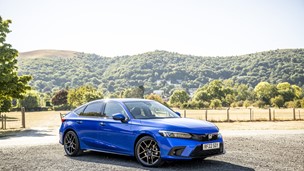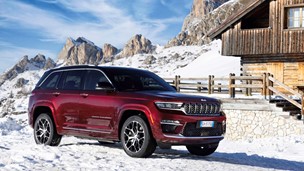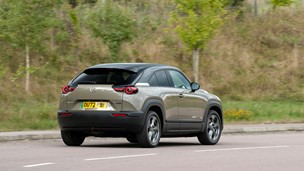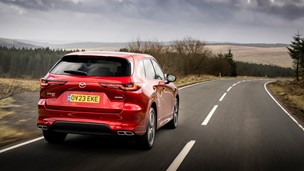As we journos were reminded during the recent launch of the new Wraith in Austria, new Rolls-Royce models come about only very rarely. Over the marque's 109-year history, there have only been about 32 of them, although with three Phantoms and the Ghost (excluding the extended wheelbase versions) and now the Wraith, no less than five new Rolls-Royces have been launched since BMW took ownership of the brand ten years ago, so such occasions aren't quite as infrequent as they once were.By any measure, what is rare is the launch of a new Wraith. The first and last one was in 1938, but it lasted only a year due to the outbreak of war. (It was revived in 1946 as the Silver Wraith and continued as such until 1959.) However, unlike the new Wraith with its sleek, fastback coupé design and 6.6-litre twin-turbo V12, those old Wraiths were cumbersome old barges, despite some being fitted with swish two-door coachwork.Equally rare is the genuinely sporting Rolls-Royce, as arguably the last was the Phantom II Continental of the 1930s. Based on the Phantom II but with a shorter wheelbase, uprated suspension and a higher-compression engine, the Continental was a much less formal car for the affluent owner/driver with a splash of petrol coursing through his veins.Unfortunately for Rolls-Royce, the Continental moniker was first re-employed by its then sister company Bentley some 61 years ago for the R-Type Continental, and it's still very much in use by Bentley today. So although the new Wraith is unquestionably a high-performance Grand Tourer, it perhaps doesn't carry the name it deserves.However, the Wraith lacks little else as the Goodwood firm has lavished everything at its disposal upon its latest model to create a modern motoring masterpiece.The Wraith has essentially the same chassis and engine as the current Ghost saloon, except that the coupé has a 185mm shorter wheelbase, power has been upped from a substantial 563bhp to a positively whopping 624bhp at 5600rpm with torque increased from 575lb/ft to 590lb/ft from 1500-5500rpm - thus making it the most powerful Rolls-Royce production car ever.In addition, the Ghost's eight-speed auto transmission is "satellite-aided" in the Wraith. By using GPS data to analyse the road ahead, the transmission anticipates the correct gear ratio based on the car's exact location and driving style. Combined with almost imperceptible gearchanging, the clever transmission further enhances the Wraith's sublimely relaxed driving experience, especially on a snaking road.With so much power, exhilarating acceleration is a given, despite the Wraith's 2.4-tonne weight. Rolls-Royce claims that it can whoosh from nought to 60mph in just 4.4 seconds (0-100km/h takes just two tenths longer) with a top speed governed to 155mph - no more than an easy jogging pace. With enormous helpings of low and mid-range power available, overtaking is a breeze, while cruising along a motorway at legal speeds requires no more than five to ten percent of the big V12's output.This extravagant surplus of muscle is complimented by very tidy handling in conjunction with a ride quality that makes even Rolls-Royce's traditional "magic carpet ride" feel like a skateboard on cobbles. The Wraith's rear track is slightly wider than the Ghost's, and it rides a little closer to the ground too, thus improving steering response and minimising body roll in corners.But this is all further enhanced by chassis management systems with variable damping and intelligent air suspension that compute an incomprehensible 400 individual load calculations per second and continually adjust as required.Complimented by a plethora of electronic driver aids including anti-roll stabilisation plus dynamic traction and stability controls and more, the steering and handling characteristics also belie the Wraith's appreciable size and weight. I'm not claiming it's Ferrari or Aston Martin agile, and it's hard to judge its size - 5.3 metres from bumper to bumper - from the driver's seat, but it nonetheless steers and turns with laudable precision.Rolls-Royce has long prided itself on the silent running of its cars, so it should be noted that the Wraith's engine emits a pleasant growl when asked to work hard - a rare occurrence - and, depending on the road surface, there are varying degrees of unobtrusive road noise from the huge Goodyear tyres.At high speed there's also a rustle of wind from around the door mirrors, but otherwise Wraith motoring is serenity and calmness personified. Even the automatic wipers are puzzlingly inaudible.Ghost owners will instantly recognise the Wraith's dash, controls and instrumentation, and this lends the car a more fashionable feel and contemporary ambience than does the Phantom's more traditional interior. Bespoke personalisation is of course very much a part of Rolls-Royce ownership, but the fit, finish and the quality of the standard materials have to been seen, felt and smelled to be believed.Taste is subjective, but that said, few of the English-speaking journalists covering this launch, myself included, would opt for the Canadel wood door panelling as fitted to many or all of the launch event cars. Although contributing to the Wraith's aesthetic modernity, this, we thought, has more the air of a kitchen finish than befits the interior of the world's most deluxe GT.Those concerned about this fastback coupé's rear passenger accommodation should worry not. Getting in and out is easy enough, and there's more than ample space, headroom included, for two full-sized adults.The Wraith's contoured rear seats are separated by a comprehensively-equipped armrest/console and, somewhat surprisingly, comfort in the rear arguably exceeds even that of the Phantom's rear bench-seat. The 470-litre boot is suitably capacious, and like the Ghost and Phantom, a Starlight headlining is available. In the Wraith this means that 1340 tiny fibre optic lights glimmer from above. Fabulous.Almost needless to say, on-board technology and connectivity abounds. There's too much to list, so here's just a taste, (some standard, some optional): a "pull-and-pinch" touchpad infotainment controller, voice-controlled navigation or remote navigation programming via an iPhone or iPad using Rolls-Royce's Connect app, voice-activated phoning, emailing and texting, Real Time Traffic Info, a head-up display, night vision, lane departure warning, parking sonars, 360-degree top view cameras and, not least, a surround-sound audio system powered by an 18-channel, 1300-watt amplifier driving 18 speakers.Rather than start another list, according to Rolls-Royce, "no technical avenue has been left unexplored to ensure occupant safety". But should all else have failed there is Auto eCall which ensures that the emergency services are immediately made aware of the car's location via its GPS positioning.Which only leaves the sordid issue of costs. For what it's worth, fuel consumption is officially 20.2mpg combined with CO2 emissions at 327g/km, while the price is "circa 281,880 euros on the road", or about £235,681.However, the various options fitted to our specific test car (the individual prices of which Rolls-Royce is reluctant to divulge) bumped its price to £289,243 – an increase that would almost buy a new 420bhp BMW M3.I started my test drive feeling somewhat ambivalent toward the Wraith, but by the end of the day I was pretty much smitten. Assuming such heady sums are comfortably within your means, then I confidently predict you'll consider it money well spent.
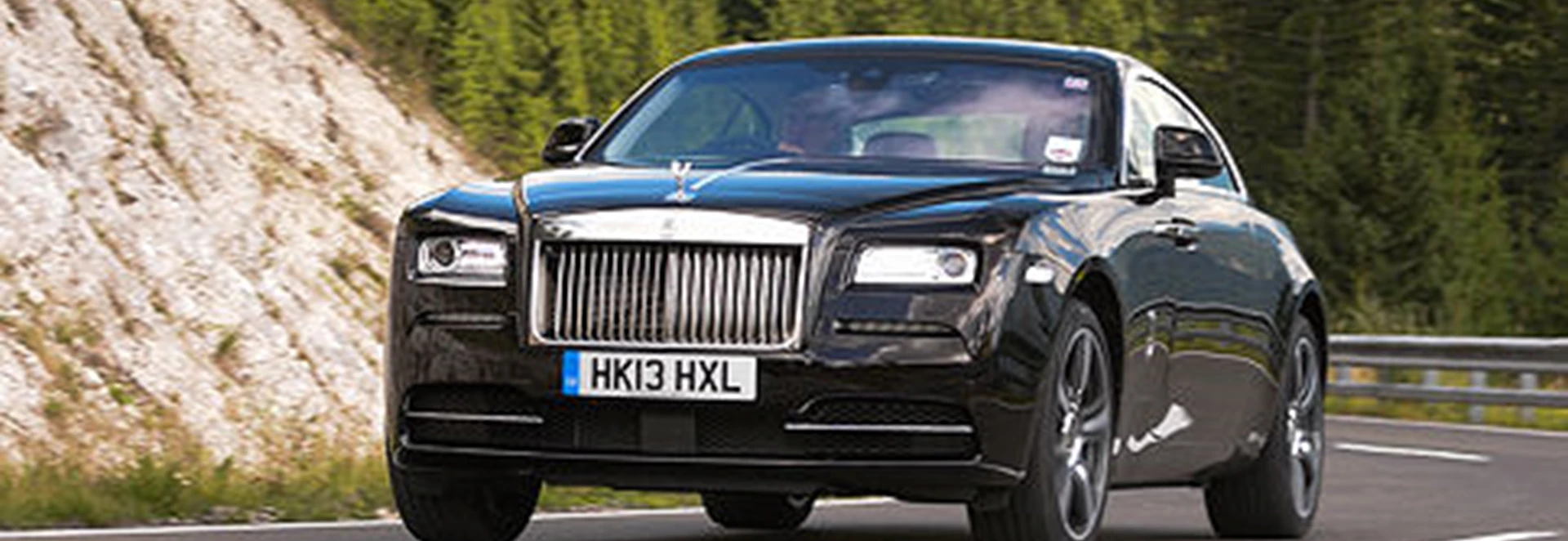
Our Rating
